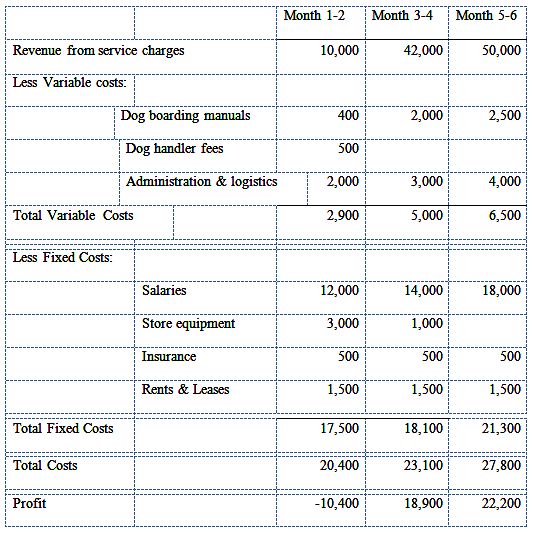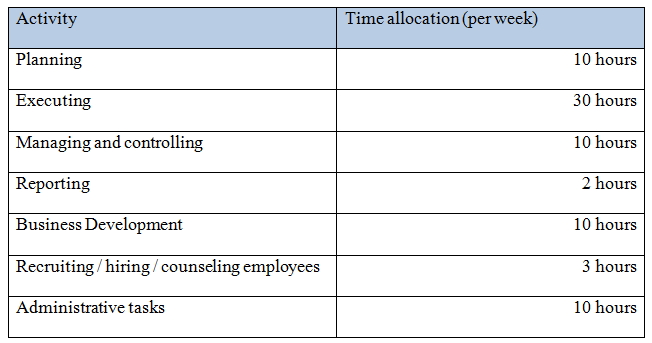Introduction
The conceptualization of a successful small dog boarding business demands a broad strategic blue print. The strategic plan should internalize the aspects of business vision, mission, values, communication plan and a balanced scorecard. Thus, this reflective paper develops a strategic plan for the proposed small dog boarding business called Dog Nest Centre to compete with the local Wessier Dog Boarding business.
Dog Nest Centre’s Strategic Plan
Vision and Mission
For an organization to succeed in marketing, it has to have both vision and mission for its marketing. They act as the guideline and reference point. The business refers to the vision and goals to determine if it is making positive progress. The business’s vision will be to be the leading business in the dog boarding services to pet owners who have no dog handlers.
On the other hand, the marketing goal will be to acquire ten clients per week for the first six months. Besides, the business will have a mission of adding value to the life of its target consumers by offering free pick services and delivery of dogs upon the return of its clients. Through its marketing, the business will strive to ensure that consumers continue benefiting from the dog boarding services at all time (Scarborough, 2012).
Values of the Dog Nest Centre
To be able to achieve the mission and the set goals, the proposed dog boarding business will require having a captivating position value statement and superior product strategy. In this case, the business’s positioning statement will be as follows;
We have what everyone wants, and at considerable prices. The dog boarding services is unique and of high quality. They are supremely stylish, trendy and certainly the latest in the market. Those that subscribe to these services will have series of discounts and offers besides life membership. The prices are also considerable; one will get the friendliest and professional services for his or her dog at an affordable price.
One of the product strategies that the business will utilize is to make sure that it attributes the dog boarding services to convenience and affordability. The business will charge dog boarding services at affordable prices as a strategy to attract consumers and not scare them away with high prices as at the local Wessier Dog Boarding business.
The Sense and Business Ethics in the Dog Nest Business
The majority of its competitors relies on local consumers. Therefore, they do not run promotional campaigns or advertise their products. Consequently, this business will have an advantage since it will create consumer awareness through its promotions and advertisements. Besides, the competitors charge high prices unlike this business that will form the pinnacle of affordable services.
To surmount this competition, the business will use strategies like consumer education on how to get the best from the services by using it appropriately (Scarborough, 2012). With a typical well organized commodity pool, this business is geared to quickly increase its market share since the beneficial interests can be distributed across the commodity users.
This strategy will facilitate the restructuring effective sales and public awareness to develop product knowledge. If well merged with appropriate market mix, the strategy will secure a continuous quantitative increase of the market by constantly maintaining relatively fare prices of the services it is offering as well as the maintenance of up to per competition levels from other competitors.
The Balance Scorecard for the Dog Nest Centre Business
The balanced scorecard for this business summarizes the internal processes, customer, financial, and strategies for growth as summarized in the table below.
Social Responsibility and Entreprenuership Skills
Knowing how to improve quality is crucial in the growth of a business. In fact, consumers normally go for products that preformed best. Besides, quality improvement will serve the organization’s needs to improve on performance, durability, maintain economic viability, maintain visual and aesthetic appeal, maintain superiority in service delivery, and keep good reputation due to quality assurance.
Thus, quality improvement deployment and organizational change action plan present an action plan that would facilitate the business gain in long term operations is value and quality improvement (Scarborough, 2012). The success puzzle for quality improvement and dog boarding business change implementation management strategy delivery operates on the periphery of the soft skills involving the timeless vision of organizational principles.
Besides, defining value of the business, determining requirements, clarifying the vision, building teams, mitigating task, resolving issues, and providing direction complete the response projections which shall be addressed in the proposed quality service delivery system as opposed to the disorganized system of the Wessier Dog Boarders business.
Furthermore, quality planning focuses on benchmarking of efficiency of the operations and service delivery initiative, accreditation initiative, and staff performance and skills assessment initiative which this business will endeavor to expound on (Scarborough, 2012).
Business Ownership
Being a very small business with a relatively low capital requirement, sole proprietorship will be the ideal form of business ownership for the Dog Nest business. The owner will have the enticement of keeping all the profit and making decision faster to suit the preferences of prospective clients.
The Business Plan for the Dog Nest Centre Business
Purpose
The communication plan has the purpose of supporting the business’ strategic objectives within the code of operation of the dog boarding business. Basically, the communication plan is a conceptual map for external and internal decoding and encoding channels for pet owners targeted.
Mission/Vision
The mission of the communication plan is to expand to the marketing team the approaches that should be adopted in implementing the strategic plan informed of the rationale of authenticating the cost effeteness element and ensure good response from the targeted pet owners.
Situation Analysis
Despite communication being rated as a high corporate strategy, action planning of communication method is of essence to create solution oriented task and strategy implementation secession. The main issues that will be addressed by the communication plan include customer acquisition, customer retention, quality services, and proactive response to different business situations. The head of marketing will lead the plan for the next six month period.
Business Goals/ Objectives
The goal is to transform the speed of the entire business structure and the business environment that affects every sphere of the internal communication issues in the business. This will ensure efficiency and professionalism in service delivery.
Corresponding Communication Goals/Objectives
In line with the vision of this business, the corresponding communication goal is sustainability and stability of the business through efficiency.
Key Themes/ Messages
Theme: Paradigm shift in service delivery
Message: Elements of service methodology for sustainable business management. These elements are expected to align organization culture, employee behavior, business etiquette, and knowledge of business solutions.
Media, Audiences, Schedules
Face to face communication will be used to pass the information to the staff in a series of weekly meeting for the next six months.
Training Managers to Communicate
Communication through reports and schedules in different departments within a business can coordinate and integrate their functions. The business leader and his or her team will establish the use of formal communication methods such as responsiveness, negotiable, and reflective approach in decoding and encoding feedback.
Evaluation
The main success measurement parameters include full house attendance by the stakeholders, full participation of all the stakeholders in attendance, and acceptance of the proposal and complete endorsement of the strategic plan.
Sources of financing the business
The internal financing options available for the business include personal sources such as retained profits and share capital. Basically, the retained profit is the funds generated by the initial business when it profitably trades (Shim & Joel 2008). Considering the duration that the business has taken, the shared profits will substantially contribute to the funding for the Dog Nest business.
Reflectively, retained profits is necessary is financing further expansion of the company since the business is likely to make profits within a few months upon conceptualization. Besides, the business has the option of acquiring funding from the share capital which has been the main source of funding for the previous years. Through share capital, the owner will be in a position to retain full control and ownership of the company, especially if he or she is the sole contributor (Cheverton, 2004).
Positioning and Branding Strategies
Through re-branding and good-better-best pricing strategy, the market segment of the business is projected to increase their use of the dog boarding services as a result of improved quality and reliability of the services. Therefore, applying the costing strategy, the business will reduce the prices to a certain minimum in order to attract customers from this segment and achieve the aim of the quantity maximization by the increasing number of services sold at low prices.
At the same, the strategy can help in revenue maximization that results from the large amount of service purchases made. Since the target market is specific, the success variable for the market share expansion strategy will be measured through an increase in sales by an eighth of its current output. Sale records will be reviewed bimonthly and revised after every six months.
In the first six months, the market share is projected to grow by a quarter of the one-eighth mark. Factoring the current inflation rate and other market dynamics, the same is then projected to follow the normal graph growth as advertisements are expected to sustain the market share expansion (Shapiro, 2005).
Budget
Sales projection and breakeven analysis
The business targets to offer dog boarding services to 1000 dogs within six months. Since service charge per dog will be $50, the business targets to collect revenue of $50,000 within the six months of operation. This is summarized in the table below.

Time allocation for the business
From the above calculations, the business is likely to break even within six months.

Reflectively, cost leadership strategy is vital in business management especially in an industry with stiff competition. Reflectively, the concept, as proposed by Porter, is a means of establishing a sustainable competitive advantage over other player in the industry.
Conclusion
This dog boarding business will adopt the cost leadership strategy to improve its efficiency through streamlining operations. As a result, this venture will develop a cumulative experience, optimal performance, quality assurance, and full control of its operation chain.
References
Cheverton, P. (2004). Key Marketing skills: strategies, tools, and techniques for marketing success. London: Kogan Page.
Scarborough, M. N. (2012). Effective Small Business Management: An Entrepreneurial Approach. New York: Pearson Education.
Shapiro, A. (2005). Capital Budgeting and Investment Analysis. New Delhi: Pearson Education India.